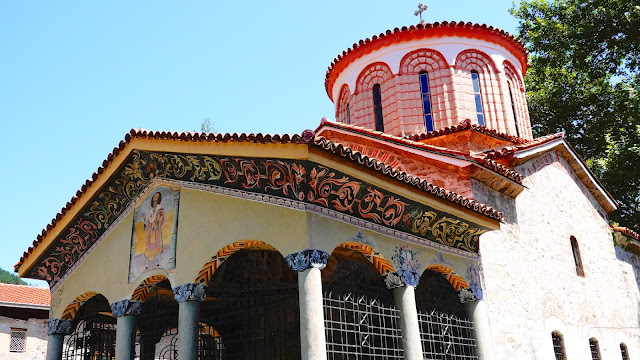This post sees us drive from Plovdiv to Kazanlak in Bulgaria via two Thracian Temples outside the town of Starosel and the Roman Ruins of the town of Hysarya.
What a terrific drive today. We left the wide open basin of Plovdiv and scrapped by a mountain chain to the Thracian Temples. The first called “Thracian Cult Temple” is the oldest ever found with a mausoleum. It dates back to the end of the 5th and the beginning of the 4th century BC. It covers six underhill temples, four of which are unique, as well as a few royal burials.
The entire hill is surrounded by a wall made of processed granite blocks. Its length is 241 meters and its height reaches 3.5 meters. The wall is called krepis and outlines a circle which according to the Thracian religious believes symbolizes the Sun. The second is called “Horizont Thracian Tumulus” and is a temple containing 10 upstanding Dorian Columns that prove the Greek origins of the Thracians.
The Thracians were an Indo-European speaking people who inhabited large parts of Eastern and South-eastern Europe in ancient history. Thracians resided mainly in the Balkans (Mostly modern day Bulgaria, Turkey and Greece) but were also located in Anatolia (Asia Minor) and other locations in Eastern Europe. The exact origin of Thracians is unknown, but it is believed that proto-Thracians descended from a purported mixture of Proto-Indo-Europeans and Early European Farmers, arriving from the rest of Asia and Africa thru the Asia Minor (Anatolia). Thracian culture was described as tribal by the Greeks and Romans. They remained largely disunited, with their first permanent state being the Odrysian kingdom in the fifth century BC. They faced subjugation by the Achaemenid Empire around the same time. Thracians experienced a short period of peace after the Persians were defeated by the Greeks in the Persian Wars. The Odrysian kingdom lost independence to Macedonia in the late 4th century BC, and never regained total independence following Alexander the Great's death.
Near the town of Banya I spotted a rocky outcrop that I climbed to get a 360 panoramic of the Central Balkan Mountains and the basin beneath it - these are the photos below with the huge fluffy rain clouds - an amazing sight !!!
The town of Hysarya was another outdoor museum - it has an entire ancient Roman city ruins mixed in with the modern town - drive down the main road and one side you see modern buildings and on the other Roman ruins !!!
Just before Kazanlak we passed through a strange little town called Panicheri which has famous faces from all over the world drawn on its buildings, even the central Church !!!
Kazanlak (Pop 69,086, Elev 407, Founded 1901) is at the heart of the “Valley of the Thracian Kings” in much the same way as The Valley of Kings and Queens in Egypt but the Thracian Tombs here are spread out over a wide area rather than all being in one place like Egypt. The tombs are inside mounds (like small hills) in the middle of fields. The town itself is not attractive and very unkept. Tried my best to get the best out it.
Enjoy the heartland of the Thracians…























































